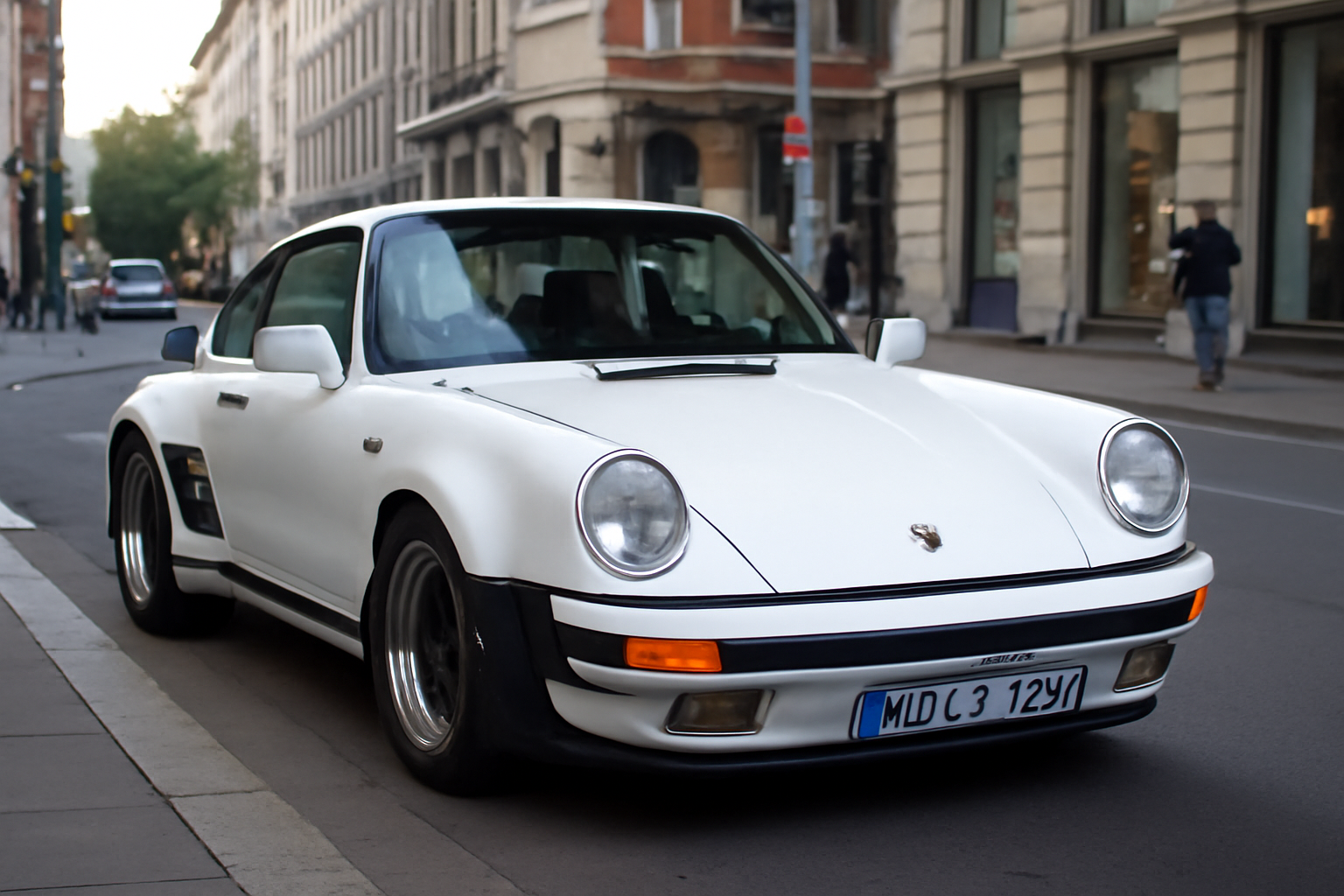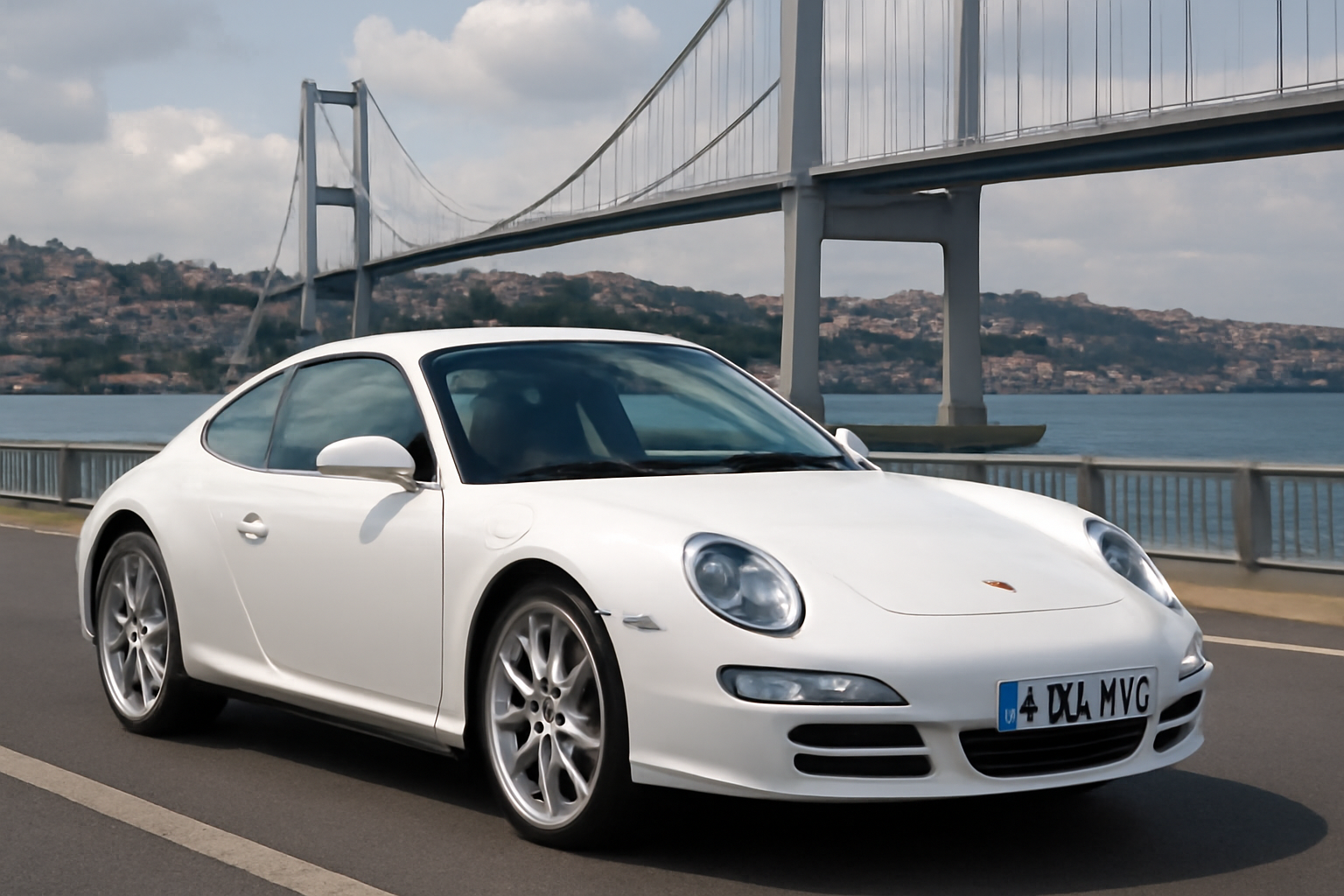The Porsche 911 is a sports car that has been in continuous production since 1964 and is considered one of the most important models of the German car manufacturer Porsche AG. Although it has undergone various technical innovations and design changes over time, its fundamental features and characteristic design elements have been preserved.
History of the Porsche 911
The development of the Porsche 911 dates back to the late 1950s. Designed as a successor to the Porsche 356, the 911 was drawn by Ferdinand “Butzi” Porsche and introduced at the Geneva Motor Show in 1964. The first production model was equipped with an air-cooled 2.0-liter six-cylinder engine that produced approximately 130 horsepower. By the 1970s, increasing demands for performance led to an engine displacement increase—first to 2.2 liters and then to 2.4 liters. During this period, safety standards were also significantly improved; for instance, in the 1974 model year, bumpers were enlarged and crash safety was enhanced.
In the 1980s, the engine capacity of the Porsche 911 reached 3.0 liters and beyond; turbo models entered the market during this period, pushing performance limits. In 1989, the completely redesigned 964 series was introduced. This version featured a modernized suspension, an optional all-wheel drive system, and advanced electronic systems. In the 1990s, the 993 series was launched—this model was the last air-cooled version of the Porsche 911. In 1998, the switch to water-cooled engines marked a major change in terms of performance and emissions standards. In the 2000s, various GT, Turbo and Carrera models were introduced, expanding the model range.
The evolution of the 911 throughout its history has been shaped by technological advancements and changing market demands; nevertheless, the car has largely preserved its original design lines, maintaining its brand identity.

White Porsche 911 Turbo (AI-generated)
Older Versions
After production of the Porsche 911 began in 1964, many generations and versions were released. The first generation, known as the 911 Classic (1964–1989), was recognized for its air-cooled engines and distinctive round headlights. During this era, engine displacement ranged from 2.0 liters to 3.2 liters. The 911 Turbo (930), introduced in 1975, was the first to use turbocharging technology, reaching 260 horsepower and significantly expanding the model’s performance capabilities.
The 964 series, launched in 1989, marked the beginning of a technologically advanced era in the history of the 911. This version featured innovations such as all-wheel drive, ABS brakes, power steering, and a modernized suspension system. The 964 also brought some aerodynamic changes and more rounded lines to the exterior design.
Produced between 1994 and 1998, the 993 series is considered the last air-cooled version of the Porsche 911. The multi-link rear suspension system developed in the 993 significantly improved handling and driving dynamics. Additionally, the 993 had a more aerodynamic body and introduced twin-turbo models for the first time.
The 996 series, which began in 1998, marked the transition to water-cooled engines in the history of the Porsche 911. During this period, engine performance was enhanced, and significant changes were made to both the interior and exterior design. The 996 featured modern production techniques and more comfort-oriented equipment, though some enthusiasts viewed it as a departure from the classic 911 spirit.
The subsequent 997 (2004–2012), 991 (2012–2019), and 992 (2019–present) series have continued to evolve in terms of both performance and technology. In particular, the 992 series was designed in line with current automotive standards, offering more advanced driver assistance systems and greater digitalization. Each version has preserved the core character of the Porsche 911 while continuing to respond to evolving technologies and market demands.

Porsche 911 Carrera 997 (AI-generated)
General Description and Design
The Porsche 911 is a sports car typically defined by its rear-mounted engine and rear-wheel-drive layout. Offered in both coupe and cabriolet body styles, the model holds an iconic place in automotive design. At the front, it features a long and slightly sloped hood, while the rear is short and high, creating a distinctive silhouette. This form is developed to enhance aerodynamic performance while preserving the characteristic look of the Porsche 911.
The headlights are round and prominently positioned—one of the most recognizable elements of the 911’s design language. Exterior components such as door handles, mirrors, and other fittings are optimized to minimize aerodynamic drag. Although the materials used in the body panels vary by model and year, they aim to balance lightness and durability.
Inside, the 911 features a driver-focused cockpit layout. The instrument cluster is designed to be simple and clear, ensuring readability even at high engine speeds. High-quality materials are used throughout the cabin, typically including leather, aluminum, and carbon fiber, all chosen to support both performance and comfort. The layout of the console and buttons follows ergonomic principles for ease of use.
In the design, functionality is just as important as aesthetics. Front bumpers and diffusers are used to manage airflow, while rear spoilers help enhance driving stability. These features allow the Porsche 911 to offer a well-balanced structure suitable for both everyday use and high-performance driving conditions. While the design language remains faithful to the model’s historic roots, it continuously evolves with technological advancements and aerodynamic demands.
Technical Specifications
Over the years, the Porsche 911 has been produced with various engine types, chassis configurations, and technological features. Early models used air-cooled, horizontally opposed six-cylinder engines. Initially, engine displacement was around 2.0 liters, but later versions exceeded 3.0 liters. In 1998, with the introduction of the 996 series, the shift to water-cooled engines began—an upgrade aimed at improving performance and meeting modern emission standards.
The chassis layout is typically rear-engine, rear-wheel-drive, although some versions (such as the Carrera 4) feature all-wheel drive. Suspension systems have evolved over the generations: early models used simple springs and dampers, while modern versions employ sophisticated multi-link independent suspension setups.
Braking systems started with disc brakes on early models and have progressed to include advanced systems like ABS and electronic stability programs in newer generations. Transmission options vary between manual and automatic, offering drivers a choice depending on their driving preferences.
The technical features of the Porsche 911 vary depending on the model series and production year, but the car consistently emphasizes high performance, dynamic driving, and exceptional handling.


